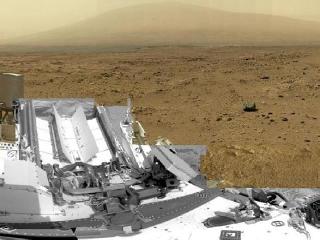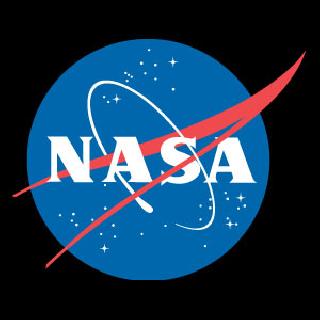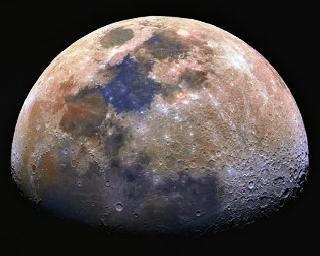
This is a reduced version of panorama from NASA's Mars rover Curiosity with 1.3 billion pixels in the full-resolution version. It shows Curiosity at the "Rocknest" site where the rover scooped up samples of windblown dust and sand. Curiosity used three cameras to take the component images on several different days between Oct. 5 and Nov. 16, 2012. Photo: NASA/JPL-Caltech/MSSS.
WASHINGTON (PTI): NASA's rover Curiosity has captured a stunning 1.3-billion-pixel image of Mars that would allow viewers to zoom in and investigate parts of the Red Planet in incredible detail.
The first NASA-produced view from the surface of Mars larger than one billion pixels stitches together nearly 900 exposures taken by cameras on-board Curiosity and shows details of the landscape along the rover's route.
The 1.3-billion-pixel image is available for perusal with pan and zoom tools, NASA said.
The full-circle scene surrounds the site where Curiosity collected its first scoops of dusty sand at a windblown patch called "Rocknest," and extends to Mount Sharp on the horizon.
"It gives a sense of place and really shows off the cameras' capabilities," said Bob Deen of the Multi-Mission Image Processing Laboratory at NASA's Jet Propulsion Laboratory, Pasadena, California.
"You can see the context and also zoom in to see very fine details," said Mr. Deen.
Mr. Deen assembled the product using 850 frames from the telephoto camera of Curiosity's Mast Camera instrument, supplemented with 21 frames from the Mastcam's wider-angle camera and 25 black-and-white frames - mostly of the rover itself - from the navigation camera.
The images were taken on several different Mars days between October 5 and November 16, last year.
Mars fans worldwide have used those images to assemble mosaic views, including at least one gigapixel scene.
 Previous Article
Previous Article Next Article
Next Article












The Indian Air Force, in its flight trials evaluation report submitted before the Defence Ministry l..
view articleAn insight into the Medium Multi-Role Combat Aircraft competition...
view articleSky enthusiasts can now spot the International Space Station (ISS) commanded by Indian-American astr..
view article